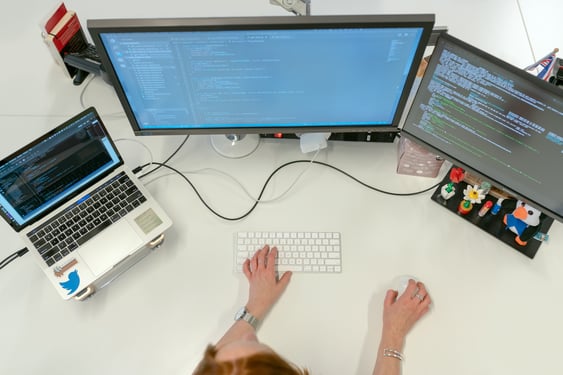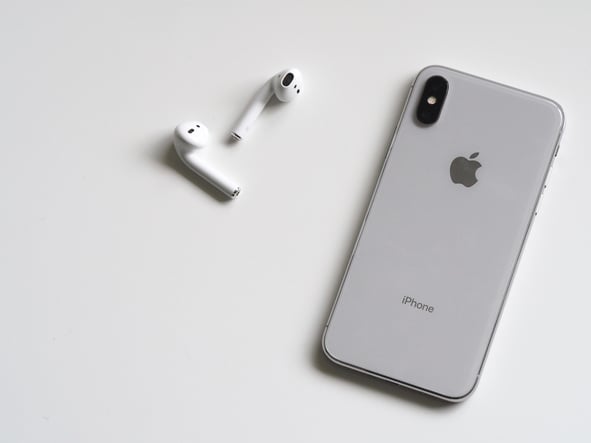Accessibility and inclusion have always been important but the past 18 months have pulled it into the spotlight. Whether it’s social, physical or cognitive we have all become more aware of institutional bias and discrimination.
Software and tech companies have responded to this raised awareness by creating products that are as usable and inclusive as possible.
In our mission to bring services to people of all capabilities, do we unintentionally neglect the people creating those products? Can we claim to be truly inclusive without a diverse workforce?
I would like to look at a few examples where tech companies are investing in accessibility, inclusion and diversity in the right way.
San Francisco company GitLab has placed inclusion and diversity at the heart of their culture and recruitment. They have introduced gender diversity focused performance indicators to their hiring process and use inclusive/non-gendered language to address imbalances in the opportunities they provide. GitLab has launched a global diversity, inclusion and belonging advisory group to assist in implementing company initiatives. It includes training in allyship, understanding and inclusive leadership.

Cisco, the telecommunications company, has set up many employee networks centering around people of different ethnicities, disabilities and diversity groups. These have helped their staff discuss and implement inclusion related change. Their Diversity and Inclusion Council was set up in 2007 and is pivotal to how the business develops, implements, integrates and advocates inclusion and diversity.
Microsoft don’t just create accessible products for their customers, they use the technology and principles as part of their everyday business. Everything they produce utilises the principles laid out in their Inclusive Design Toolkit. This is not a resource they keep a secret, it’s available to all and lays out the principles in a way that’s easy to digest. Microsoft has built a culture where their employees feel valued and empowered and challenge them to be aware of things like the simple social etiquette of not interrupting people, embracing change through involvement and consultation on big and small alterations. They promote cultural empathy and have created a leadership team who have embedded these behaviours within their areas of the business. This is celebrated at their annual Ability Summit.

Apple is described as a multi-generational company with unique and diverse employees aged between 18-85. To ensure they maintain diversity Apple target under-represented groups in tech. In 2016-2017 50% of all new hires came from this approach. At a senior level they are steadily increasing the percentage of female leaders.
In addition to a strong, diverse hiring process Apple has teamed up with education professionals who work within the blind and deaf communities to provide accessible coding to their institutions. This aims to provide opportunity to those who may not have received it otherwise.
Hewlett Packard (HP) was the first company to create an employee resource group specifically for LGBT (now LGBTQ+) employees. HP recognised early that diversity and equality are key to collaborative innovation. They also have employee groups representing several constituencies covering cultural heritage, sexuality, disability, generational, military veterans and women. In 2020 Hewlett Packard received a 100% ranking on the Human Rights Campaign’s Corporate Equality Index, which they describe as the gold standard in measuring LGBTQ+ inclusion among U.S. companies, for the 17th time.

The examples above give a small glimpse into what large scale businesses are doing to address their shortcomings. There is a misconception that accessibility and inclusion initiatives are expensive but the common theme across each company is the creation of communities promoting open and honest communication.
With that in mind, here are some ways you can help to make your organisation more inclusive and diverse:
Listen to your employees - First and foremost you need to understand their needs and concerns.
Help create communities but don’t force them - You will only get worth out of these if they are driven by passion and desire.
Be prepared to fail - You will make mistakes, people are fallible and we won’t always get it right. Embrace failure, learn from it and refine your ways.
Break down recruitment barriers - Look at your technology and processes, assess what you have in place that would enable existing and potential new starters to contribute to the business.
You should never discount a candidate because you don’t have the appropriate support. Consider if they will bring value to the business and review what value the business could bring to the candidate.
A sense of belonging is a key component often under appreciated by businesses. It exists in the cross section of inclusion, diversity and equity. If people belong, they become invested advocates for positive change. In reality, whatever the situation, if you look to recognise exclusion, investigate with empathy, spend time to understand the experience from that person’s perspective and solve for one person and extend to many, you will be on the right track.
Author Bio

Paul Alexander is a Quality Assurance Manager and accessibility and inclusivity advocate. He champions inclusive design practices and has spoken at a number of events on accessibility and inclusive in design.
